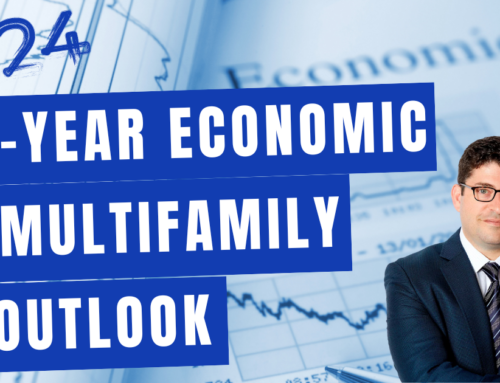As an investor, understanding the tax advantages of multifamily real estate investments can be an absolute game-changer for your portfolio. While most know that real estate is a savvy move for their investment strategy, few realize the sheer depth and breadth of tax benefits that come with multifamily properties. Here, we’ll delve into the heart of these advantages, providing clear, actionable insights for investors like you.
What Is Multifamily Real Estate?
In its simplest form, multifamily real estate involves properties designed to house several different families in separate units. Apartment complexes, duplexes, triplexes, and larger townhome communities all fall into this category. Such properties are a staple in any balanced real estate investment portfolio due to their unique characteristics and financial advantages, such as steady cash flow, scalability, and as we’re about to explore, significant tax benefits.
Tax Benefit 1: Depreciation
One of the most potent tax advantages of multifamily real estate is depreciation. Unlike other types of investments, real estate allows for the depreciation of the asset over a set period, generally 27.5 years for residential real estate. This depreciation is a non-cash expense that reduces taxable income, potentially saving investors thousands of dollars each year.
Tax Benefit 2: Mortgage Interest Deductions
Mortgage interest deductions can provide significant tax relief for real estate investors. Essentially, the interest paid on your mortgage can be written off against your income. This can greatly reduce your taxable income, again highlighting the tax advantages of investing in multifamily real estate.
Tax Benefit 3: 1031 Exchange
Named after Section 1031 of the Internal Revenue Code, a 1031 exchange allows an investor to sell a property, then reinvest the proceeds in a new property and defer all capital gain taxes. This enables you to continue growing your investment capital without being hindered by immediate capital gains tax liability.
Tax Benefit 4: Capital Gains Tax Rate
If you hold your multifamily real estate investment for more than a year before selling, your profit will be subject to the long-term capital gains tax rate. These rates are generally significantly lower than ordinary income tax rates, offering potential savings to savvy investors.
Tax Benefit 5: Opportunity Zones
An Opportunity Zone is an economically-distressed community where new investments, under certain conditions, may be eligible for preferential tax treatment. If a multifamily property resides in one of these zones, investors can benefit from deferring tax on prior gains until 2026 at the latest, provided that the gain is reinvested in a Qualified Opportunity Fund.
Tax Benefit 6: Passive Activity Losses
Passive activity losses (PALs) are net losses from passive activities, such as rental real estate. In the right circumstances, these losses can be written off against passive activity income, thereby reducing your taxable income. Remember that multifamily properties are often more resilient to market changes than single-family units, making the PALs an often overlooked tax advantage.
Making the Most of Multifamily Real Estate Tax Benefits
To maximize these tax advantages, it’s crucial to work with a knowledgeable tax advisor who is experienced in real estate investing. Tax law can be complex and ever-changing. Professional advice can ensure you make the most of these potential tax benefits and avoid any potential pitfalls.
The Multifamily Real Estate Advantage: Beyond Tax Benefits
While the tax advantages of multifamily real estate are compelling, the benefits of this investment strategy extend far beyond tax alone. These properties are often more cost-effective to manage, promise higher income potential, and provide a measure of protection against market volatility. When considered holistically, multifamily real estate presents a solid case for inclusion in any diversified investment portfolio.
Unleash the Full Potential of Your Multifamily Investments: Engage with an Expert Today
This journey into the tax advantages of multifamily real estate investing reveals a vast landscape of opportunities that can drive substantial savings and augment your investment portfolio’s performance. From depreciation and mortgage interest deductions to 1031 exchanges, Opportunity Zones, and beyond, these benefits form powerful undercurrents in the flow of wealth creation.
But seizing these opportunities isn’t merely about understanding them; it’s about integrating them into a comprehensive, tailored strategy—one that’s shaped not only by your investment goals but also by the nuances of your financial situation and the rhythm of the market. Avid Realty Partners has guided countless investors through this complex yet rewarding journey.
The insights we’ve shared in this blog post are your first steps toward leveraging the power of multifamily real estate investing. Now, let’s take the next step together. I invite you to schedule a free strategy call with us. During our conversation, we’ll explore how to align these tax benefits with your investment strategy and aspirations, sculpting a path toward enhanced portfolio performance and sustainable wealth generation.
The world of multifamily real estate investing, with all its possibilities, awaits you. Don’t miss the opportunity to tap into its potential and elevate your investing journey to new heights. Book your free strategy call now, and let’s uncover the untapped potential in your multifamily investment strategy together.
Conclusion
The tax advantages of multifamily real estate investments are undeniably significant. From depreciation and mortgage interest deductions to 1031 exchanges and opportunity zones, these benefits can translate to substantial savings, driving your portfolio’s performance and underpinning a more robust investment strategy. However, these tax benefits are just part of the bigger picture. When combined with the inherent resilience and earning potential of multifamily properties, it’s clear why many savvy investors are gravitating toward this asset class.







Leave A Comment